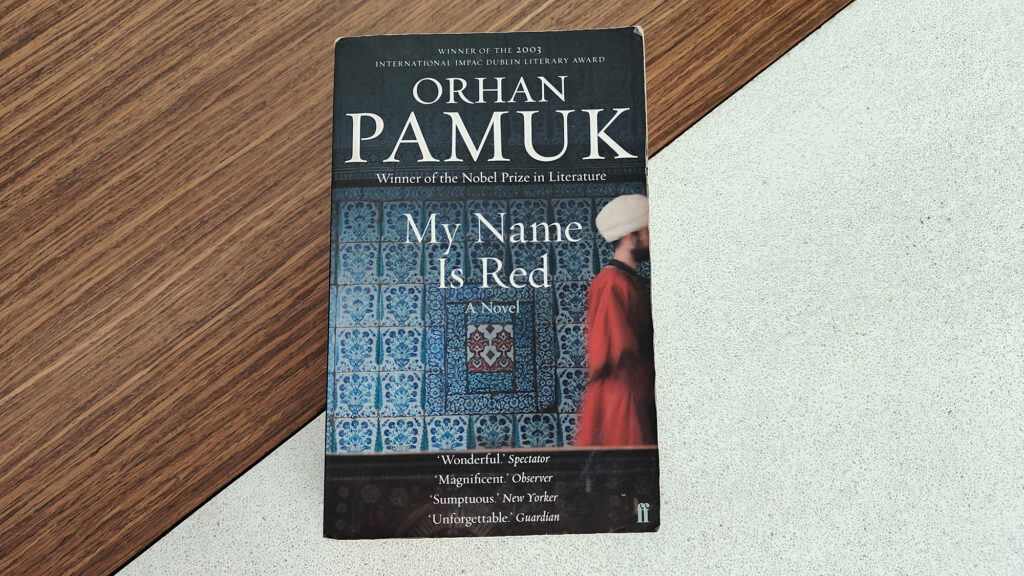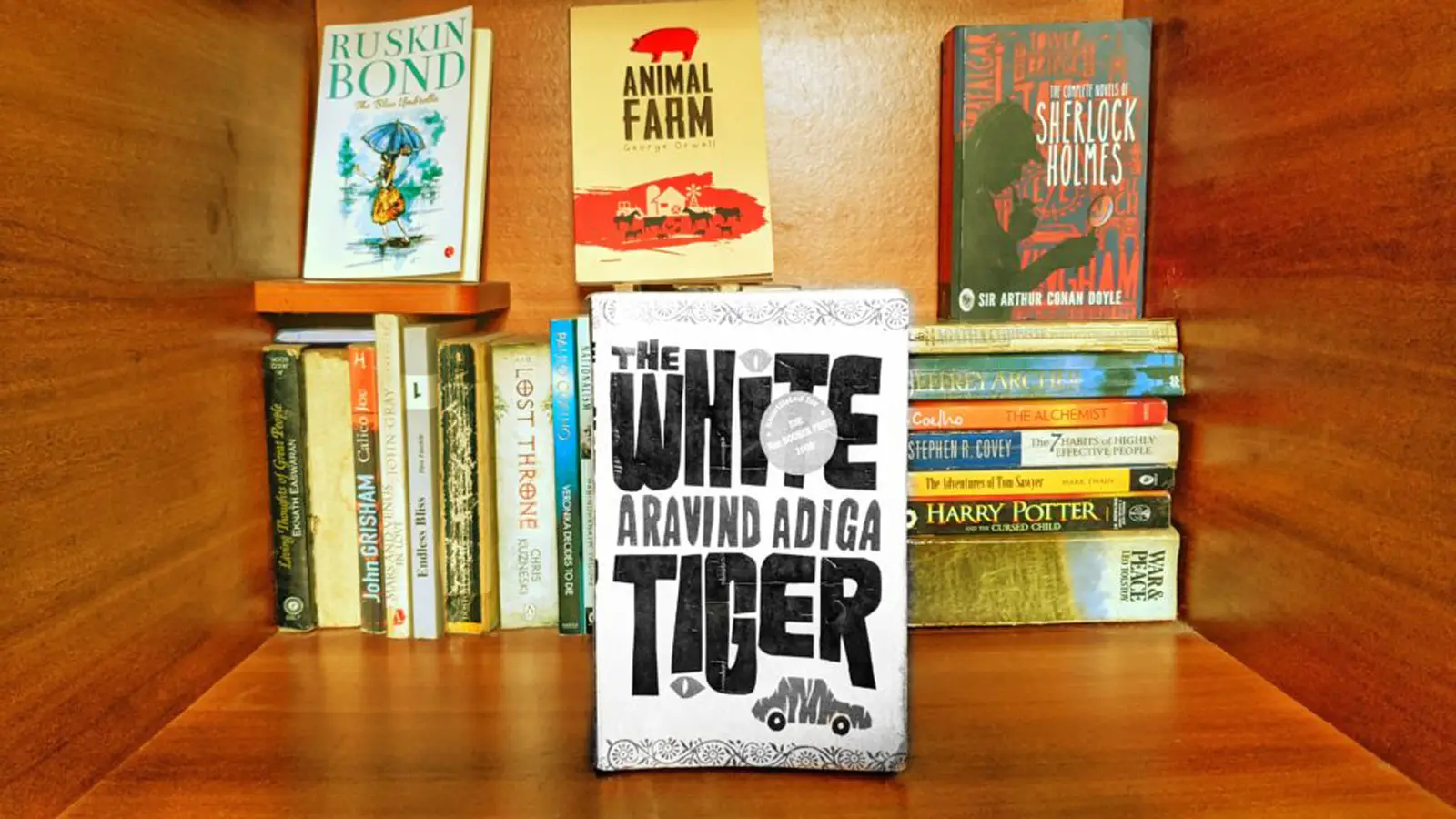It was in the year 2015 that I first read Orhan Pamuk’s “My Name is Red.” Orhan Pamuk, a Nobel Prize-winning author from Turkey, hails from a land of dichotomies that connects East to West and is rich in history and vibrant culture, rooted in tradition yet always poised to embrace the new. Orhan Pamuk’s work is rooted in this land of contrasts and contradictions, a land that has ruled over huge empires in the past and produced great art and architecture.
I visited this piece of literature again recently. As stated earlier, the best thing about reading a great book is that it is so much like meeting a wise, knowledgeable, and interesting person. Every time you visit them, there is so much to be gained, understood, and delighted by. “My Name is Red” is one such book, magnificent in its setting and unforgettable in its narrative .
Set in 1591, during the time of the Ottoman Empire, the book is a work of passion, love, and philosophical musings on the nature and purpose of art. Remember, this was a time when art flourished in the region, patronized by the rulers. The art of illumination by miniature artists was the high point of all the books written at that time.
The first chapter opens with the horror of a corpse pleading to search for its murderer: ‘I am nothing but a corpse now, a body at the bottom of a well.’ It quickly morphs into curiosity about a secret book, central to the story. What book has such power as to lead to the illumination artist’s murder? What is art? What is blasphemy? What is the purpose of art?
As you read more, the book presents itself as a thriller where each character speaks to you, telling their story—sometimes of passion, other times of reason, and for some, it is their belief. They talk of the fear of losing their system to new thoughts from the West. Sometimes there is reverence for traditions, and at other times, there are secret desires that drive these narratives forward.
The main protagonist, Black, represents new rational thought. He has just come back from the West after a long hiatus. There is Shekure, his love interest, who represents passion. Then there are the master miniature artists who are working on the book, the commissioner of the book, the Sultan, and the murderer—all having their faith, fears, doubts, reasons, and secrets.
Interestingly, in one of the chapters, the colour red is the narrator: “I am the colour red. I am the life-giving blood.”or “In red, there is both the warmth of life and the intensity of death” as it proclaims.
The book, though posited as a thriller, is a study and musing in the times of the growing influence of Western thought and style on the Eastern way of life. Through its varied and diverse narratives and narrators, the book raises questions and makes statements that got me thinking about the nature and purpose of art.
What is the purpose of art? Is it to serve the unknown? Is it to please the eyes? Is it to express emotions? Or is it there to conform to certain universal or cultural ideas?
Through its various quotes and dialogues, Pamuk raises questions about whether art is what God sees, as it seemed in the Eastern tradition of miniatures, or it is what the human eye perceives, as was happening in the Renaissance times through art of perspectives. It places questions on conforming to a certain way of depiction in art, for a style in the Eastern tradition has been perceived as a flaw; a signature, quite unnecessary and a statement of ego. In Western tradition, style is sought after and often celebrated.
Is individual style and innovation an expression of self, or is it a statement of ego? Is cohesion and conformity mundane and boring, or does it serve a higher purpose? Can objectivity be achieved in art?
Is art to be seen or to be felt? It is amusing when the colour red, which in itself is an expression of passion, anger, and blood, narrates and takes the story forward.
How does one experience art? Is it shaped by personal experience and thought processes, or is it influenced by collective perspectives? Can art simply delight the viewer, or does it serve as a means to connect with the Divine?
This contradiction between the individual expression of the West and the tradition of the East, through its engaging narrative, poses contrasting opinions in front of the reader, making her think about diverging aspects of Eastern traditions and Western individualism.
Through the musing of the nature of art, Pamuk brilliantly questions and posits the Eastern thought of belief and faith versus the Western way of science and rationalism, passion versus pragmatism, tradition and culture versus free will.
The book inspired me to reflect deeply on my own traditions and belief system. It showcased a brilliant contrast between equally strong yet opposing viewpoints, deepening my appreciation for both perspectives. Examining these contrasts allowed me to understand and value what I have.
“My Name is Red” is a masterful exploration of the intersections between tradition and modernity, East and West, passion and reason. Through its rich narrative and its deep philosophical inquiries, Pamuk’s novel challenges readers to contemplate the true essence and purpose of art. It eloquently presents the tension between collective tradition and individual expression, ultimately sparking a profound reflection on one’s own beliefs and values. This literary journey not only delights but also enlightens, leaving a lasting impact on the reader’s perspective on art and culture.




An intriguing review of a fascinating book. Provides a clear insight of the book. Great work.
Thanks Neeraj for being a cheerleader of my work. Do share my blog to others if you can.